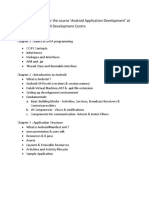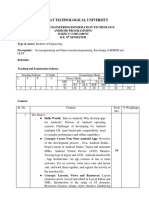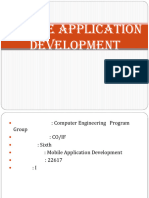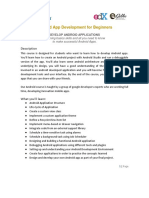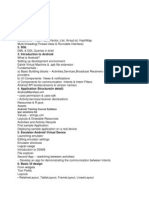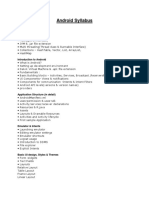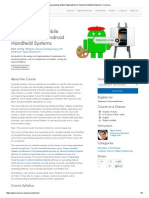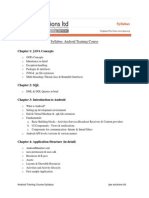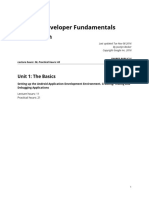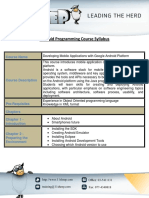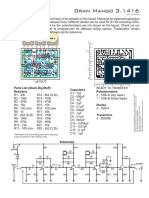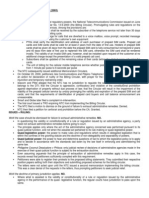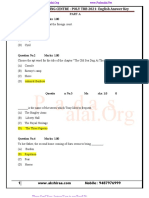0% found this document useful (0 votes)
122 views4 pagesCs 315 - Android Development Syllabus
This document outlines the course syllabus for Mobile Application Development using Android at the University of San Jose - Recoletos. The course will teach students how to design and build mobile apps using the Android platform through lectures and hands-on labs. By the end of the course, students will complete their own original Android app. The syllabus lists 20 chapters that will cover fundamental Android concepts like activities, services and intents, as well as UI design, databases, notifications, threads and advanced topics. It also provides the instructor's contact information.
Uploaded by
swarnakarpphoto131Copyright
© © All Rights Reserved
We take content rights seriously. If you suspect this is your content, claim it here.
Available Formats
Download as PDF, TXT or read online on Scribd
0% found this document useful (0 votes)
122 views4 pagesCs 315 - Android Development Syllabus
This document outlines the course syllabus for Mobile Application Development using Android at the University of San Jose - Recoletos. The course will teach students how to design and build mobile apps using the Android platform through lectures and hands-on labs. By the end of the course, students will complete their own original Android app. The syllabus lists 20 chapters that will cover fundamental Android concepts like activities, services and intents, as well as UI design, databases, notifications, threads and advanced topics. It also provides the instructor's contact information.
Uploaded by
swarnakarpphoto131Copyright
© © All Rights Reserved
We take content rights seriously. If you suspect this is your content, claim it here.
Available Formats
Download as PDF, TXT or read online on Scribd
/ 4

